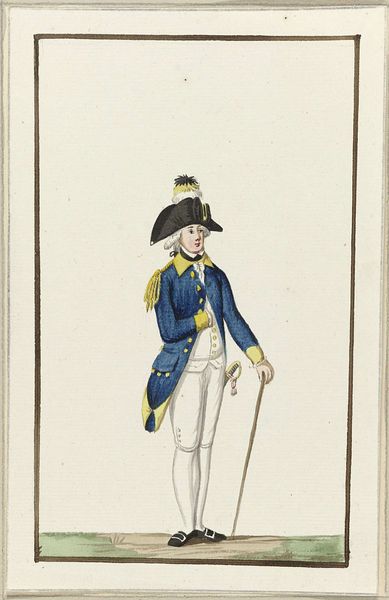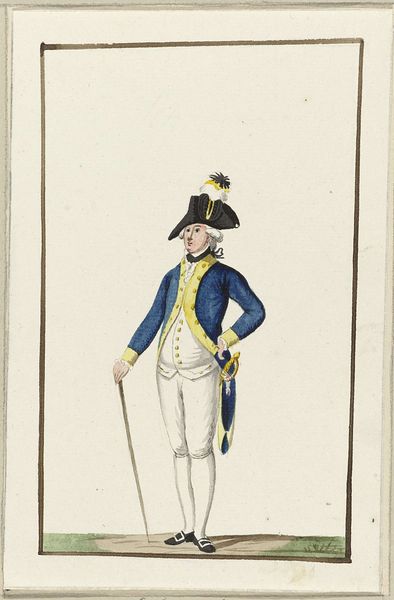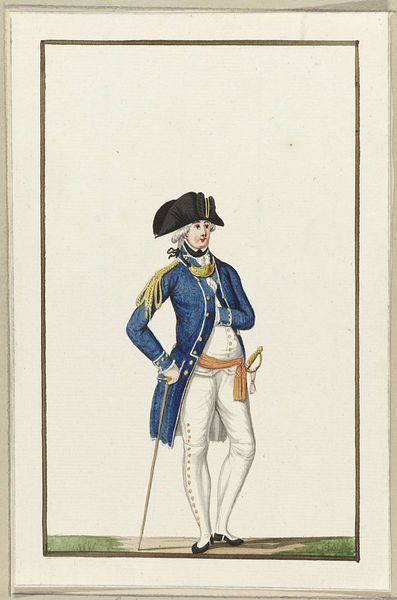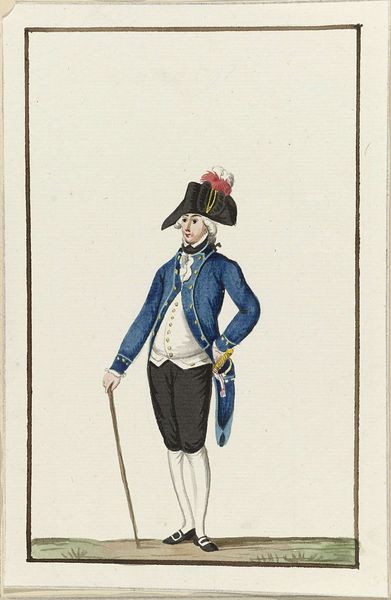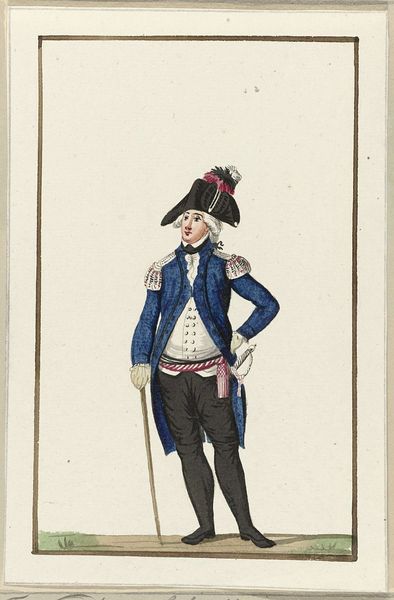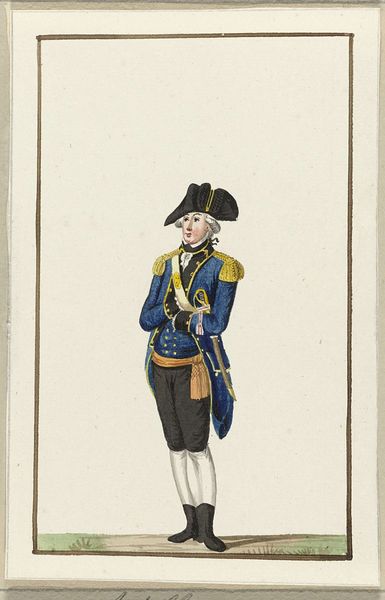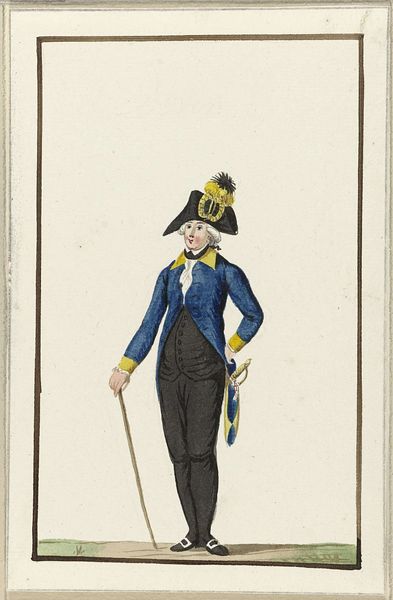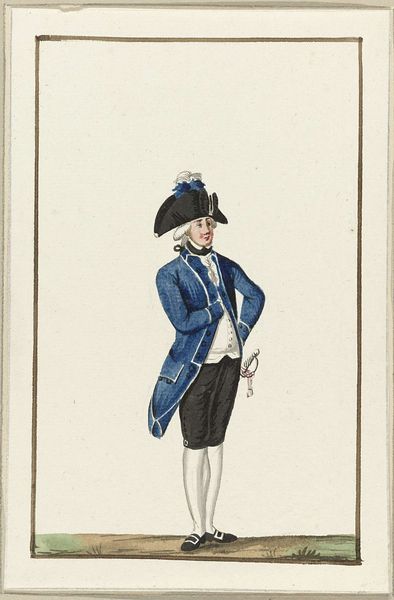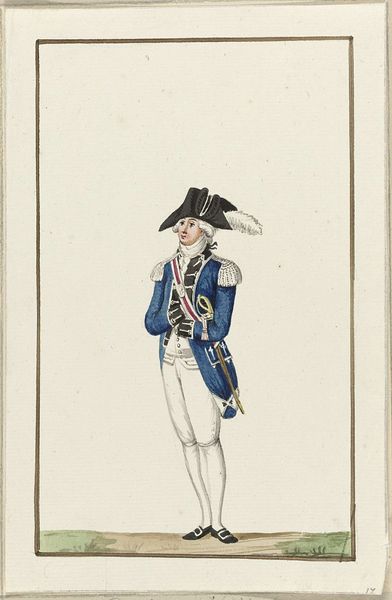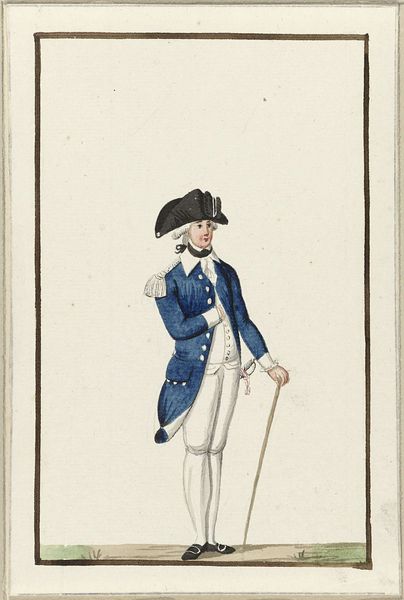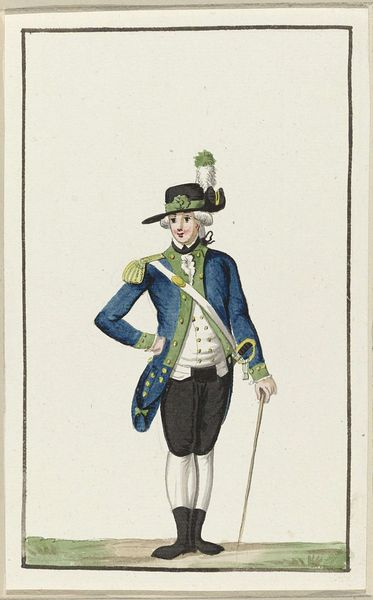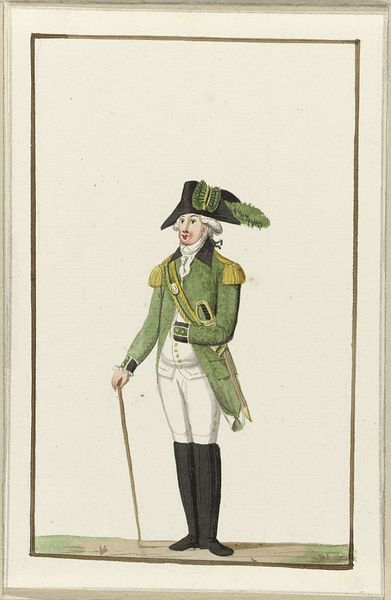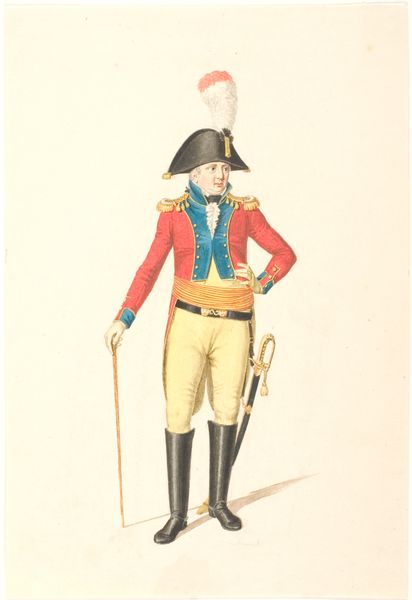
drawing, watercolor
#
portrait
#
drawing
#
neoclacissism
#
watercolor
#
historical fashion
#
watercolour illustration
#
history-painting
#
watercolor
Dimensions: height 205 mm, width 135 mm
Copyright: Rijks Museum: Open Domain
Curator: This is an interesting piece from around 1787, "Montering van een exercitiegenootschap te Leiden," now residing in the Rijksmuseum. The work is an anonymous drawing, made with watercolor. Editor: My first thought? Clean, crisp lines and striking colours for something over two centuries old. The figure almost pops right off the pale background. There's a kind of poised, elegant quality that strikes me. Curator: It’s Neoclassical, you can tell, with that controlled order and a focus on rational depiction. However, what really draws me in is that "anonymous" credit. Who produced it, for whom, and what function did this image serve? Was this a singular work or part of larger production or commission? The details matter, especially how it connects to broader social structures of Leiden. Editor: Precisely. See how the gold braid and trim on his jacket catch the light, contrasted against the stark white undershirt and powdered wig? It screams social status, doesn't it? Even down to the way the artist suggests the textures, all with delicate washes of color. Curator: Absolutely, that finery indicates the networks of trade and the hierarchies it sustains, right down to where the pigment comes from, how it's sourced, and the labour involved in its production and dissemination. The way he's equipped with both sword and cane signals that he is quite literally equipped to assert dominance, materially. It reveals the material investment in military fashion. Editor: I notice the almost diagrammatic representation of the man's figure – the simplified planes and controlled details give it a rather detached feel. Less emotional depth, more focus on clarity. Curator: Yes, think of its potential usage, though. Perhaps circulated among tailors, each could reproduce and outfit their clients in appropriate displays of patriotic duty. Or a tool employed by the citizen militia, for standardisation? In a revolutionary era in Europe, it offers some sense of understanding of how revolutionary armies used and were used by the cultural moment. Editor: Seeing this piece, so much information is being conveyed here, so economically. Curator: I'll certainly look at it with fresh eyes, thinking about the broader labor implications and socio-economic framework woven into this watercolor!
Comments
No comments
Be the first to comment and join the conversation on the ultimate creative platform.
